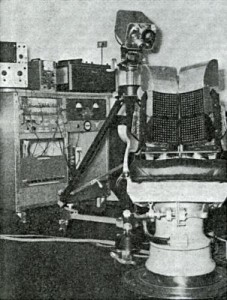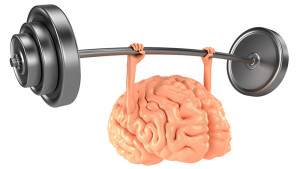Advances in Neuroplasticity – Bozeman PechaKucha Night
Good evening, I am Michael Koster and I would like to give you some insights into the exciting area of Neuroplasticity as well as some concrete examples of practical applications. I hope you are all taking notes tonight because there will be a quiz at the end of this presentation.

Slide 2
This is the model of the brain that has been used for the last 400 years. It has well defined regions and those regions do not change. This lead to important conclusions about the brain:
1. When brain cells failed to develop properly or were damaged they could not be replaced.
2. The brain could not alter it’s structure or find new ways to function once it was damaged.

Slide 3
This is the current model of the brain, actually this is what your brain looks like after you raise teens,
A plastic brain or neuroplasticity implies that the brain can change
1. Children are not always stuck with the mental abilities they are born with.
2. A damaged brain can reorganize itself
3. Old dogs can learn new tricks with ease

Slide 4
The Nucleus Basalis focuses our attention and helps us remember what we are experiencing. After the critical periods of development in childhood when the nucleus is always on, it can only be activated when something important, novel, or surprising occurs or when we make the effort to pay close attention. This the brain region that is the control center for plasticity.

Slide 5
This is Cheryl. Her balance system was destroyed by an antibiotic. Consequently she can hardly stand up on her own and always feels like she is falling over. The helmet she is wearing has an accelerometer built into it that feeds information to electrodes on her tongue. From the moment she put the helmet on the sense of falling left her.


Slide 6
Paul Bach-y-Rita built the helmet Cheryl is wearing and is one of the pioneers of sense substitution. His first device was a chair that allowed blind people to see images through vibrating sensors on their back. The original version built in the 60’s weight over 400 pounds.


Slide 7
The new version weights a view ounces and mounts on a pair of glasses. Like the helmet it also works through electrodes stimulating the tongue. The Pons device is the interface that sends the signals. Bach-y-Rita’s team has found that just programing the ponds to send random impulses can help people with Multiple Sclerosis regain motor function and speech.

Slide 8
Michael Merzenich was probably the first person to use the term Neuroplasticity in the published Literature. His original work was on cochlear implants that bypass the damaged parts of the ear and feed sound signals directly to the brain. He proved with a series of experiments that brain maps do in fact change over time.

Slide 9
He has taken his knowledge of brain maps and turned it into practical inventions that help sharpen perception and memory, and heal learning problems. His team of scientists develop software programs that redesign the brain by training specific processing areas to do more mental work………( He believes that IQ can be improved.)

Slide 10
A set of Identical twins was enrolled in our Montessori Preschool. One neuro typical, the other exhibiting a lack of awareness of other people and obsessive behavior. We gave him four thirteen day treatments sessions of a sound therapy program known as the Tomatis Method. He now exhibits neuro typical behavior and is more advanced academically and socially then his twin brother.

Slide 11
Alfred Tomatis developed this method and a device he called the electronic ear in the 1950’s originally to help Opera singers regain damaged areas of their vocal range.
He discovered:
1. The voice only contains what the ear hears
2. If hearing is modified the voice is immediately modified
3. It is possible it permanently change speech by means of auditory stimulation.

Slide 12
The Tomatis Method uses the ear as a gateway to the brain. The ear not only transmits sound to the brain but also transmits information about balance. By stimulating the ear in specific ways it is possible to strengthen the auditory reflex and retune the cortex to respond to different frequency ranges.

Slide 13
This little girl had an inability coordinate her movements, she could not speak clearly and was not potty train at age 4 and a half. In our Montessori environment she could not sit still or focus on a lesson. After we gave her 7 days of sound therapy she potty train herself. After 15 days her speech began to clear and she began to focus on lessons.

Slide 14
The Tomatis method uses modified classical music that has been sent through sound processors. Because of the unpredictability that has been added to the music it forces the brains processing centers to stay engaged. This facilitates neuroplasticity and allows the brain to rewire itself .

Slide 15
Recently, a 69 year old dentist suffered a major stroke. He was given an experimental drug that saved his life, but he experienced loss of fluid speech and loss of fine motor control. After three months of traditional therapy he still had not recovered. After 15 days of sound therapy he was able to speak clearly and tie sutures again.
Slide 16
Languages exist in different frequency ranges. One theory of autism is that during critical periods of language development too many neural connections are made, overwhelming the nervous system. Sound Therapy can help reset neural connections for specific language frequencies pruning back unwanted frequencies and making it easier to learn new languages .

Slide 17
Nutrition is a vital component of neuron development. 50% of the oily part of synaptic membranes in the brain are made up of DHA fatty acids. If the body does not have enough DHA it uses inferior material which can lead to anxiety, depression, poor memory, and poor reaction time.

Slide 18
Exercising your brain is one of the most positive things you can do to promote healthy neural networks. Learning something new and challenging like a foreign language, taking up an instrument and learning to read music or practicing on specifically designed software can keep your brain stay young and healthy. I don’t think watching you tube videos or Netflix counts though.



Slide 19
Norman Doidge is one of the leading experts on neuroplasticity and he has written two amazing books on the topic from which I have borrowed liberally. These books chronicle many other discoveries from the frontiers of neuro science. Both books are entertaining and include references to published studies.

Slide 20
Many children with learning challenges are brilliant and try much harder then their peers they just need the right neural connections. Based on my research 95% of all learning disorders and many developmental delays can be corrected with the neuroplastic technology currently available. Research indicates older brains can be helped as well.
Slide 21
O.K. I warned you there would there would be a quiz at the end of this presentation. I realize this is kind of a trick question but I want to see a show of hands of people who think yes the brain can change? How about no? Still a few nos. well I guess some brains don’t change, but most can change with the right stimulation. Just in case you weren’t taking notes I posted my lecture notes on my website under blogs.
Slide 22
Thank you, I am Michael Koster and you can find me at IntegratedBrainSolutions .com
My e-mail address is michael_kost5@msn.com
























 A lot of the learning challenges that children deal with, including attention deficit disorders, dyslexia, apraxia, autism spectrum and even global developmental delays have a component of incomplete or incorrect neural connections and pathways in the brain. There are probably many reasons why these incomplete connections occur and many of the symptoms can be devastating for the child and for the parent. The most frustrating part is that many of the children who suffer from these develop some type of coping strategy.
A lot of the learning challenges that children deal with, including attention deficit disorders, dyslexia, apraxia, autism spectrum and even global developmental delays have a component of incomplete or incorrect neural connections and pathways in the brain. There are probably many reasons why these incomplete connections occur and many of the symptoms can be devastating for the child and for the parent. The most frustrating part is that many of the children who suffer from these develop some type of coping strategy.
 processing. From Neuroscience the adage “neurons that fire together wire together” comes into play and new neural pathways are formed and almost miraculously the child starts having more self control, self regulation and the world around him begins to make sense.
processing. From Neuroscience the adage “neurons that fire together wire together” comes into play and new neural pathways are formed and almost miraculously the child starts having more self control, self regulation and the world around him begins to make sense. The power to listen affects every aspect of a person’s life. It guides the development of consciousness and the biological development of the nervous system. The vestibular system of the ear also controls posture and muscle tension. Listening involves a choice, and the patterns for how we make those choices started two months after conception when we started listening to the high pitched frequencies of our mother’s voice.
The power to listen affects every aspect of a person’s life. It guides the development of consciousness and the biological development of the nervous system. The vestibular system of the ear also controls posture and muscle tension. Listening involves a choice, and the patterns for how we make those choices started two months after conception when we started listening to the high pitched frequencies of our mother’s voice.